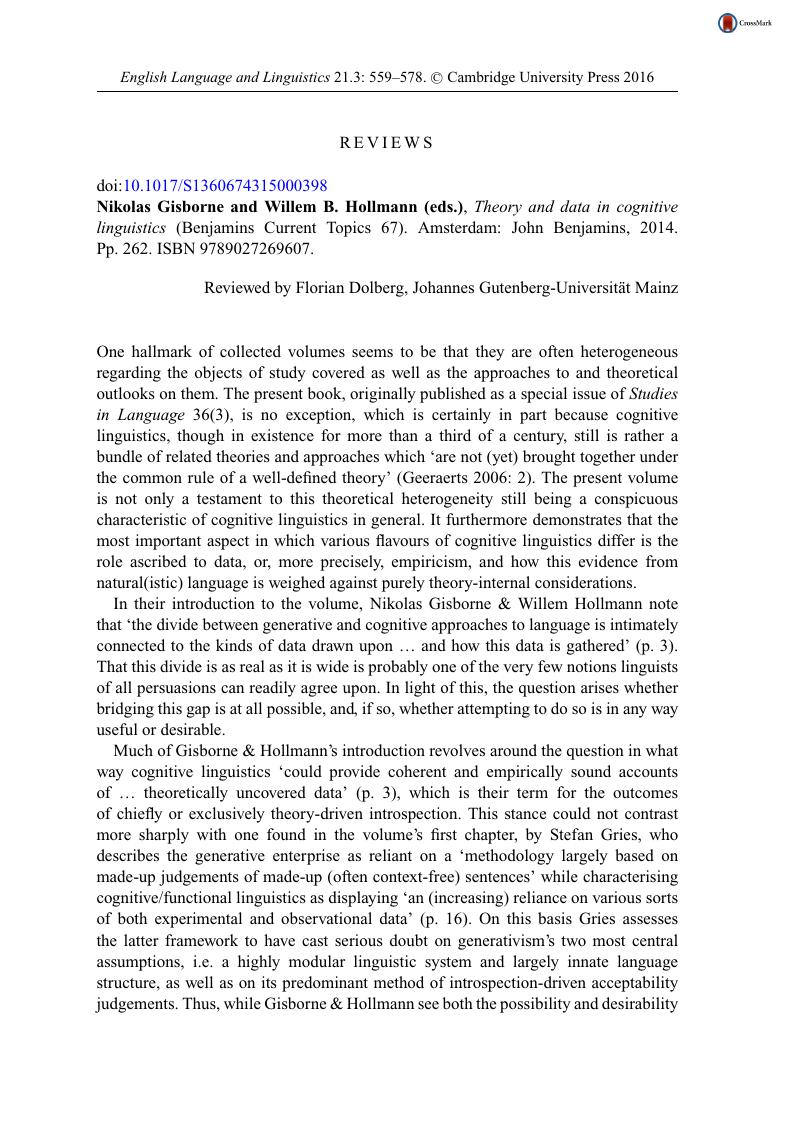No CrossRef data available.
Article contents
Nikolas Gisborne and Willem B. Hollmann (eds.), Theory and data in cognitive linguistics (Benjamins Current Topics 67). Amsterdam: John Benjamins, 2014. Pp. 262. ISBN 9789027269607.
Published online by Cambridge University Press: 22 January 2016
Abstract
An abstract is not available for this content so a preview has been provided. Please use the Get access link above for information on how to access this content.

- Type
- Reviews
- Information
- Copyright
- Copyright © Cambridge University Press 2016
References
Geeraerts, Dirk. 2006. A rough guide to cognitive linguistics. In Geeraerts, Dirk (ed.), Cognitive linguistics: Basic readings, 1–29. Berlin: Mouton de Gruyter.Google Scholar
Dolberg, Florian. 2015. Gender variation, change, and loss in mediaeval English: Evidence from the Anglo-Saxon Chronicle. Hamburg: Universität Hamburg.Google Scholar
Field, Andy, Miles, Jeremy & Field, Zoe. 2012. Discovering statistics using R. London: Sage.Google Scholar
Mitchell, Bruce. 1985. Old English Syntax, vol. I: Concord, the parts of speech, and the sentence, vol. II: subordination, independent elements and element order.
Oxford: Clarendon Press.Google Scholar
Stefanowitsch, Anatol & Gries, Stefan Th.. 2003. Collostructions: Investigating the interaction between words and constructions. International Journal of Corpus Linguistics
8
(2), 209–43.Google Scholar



